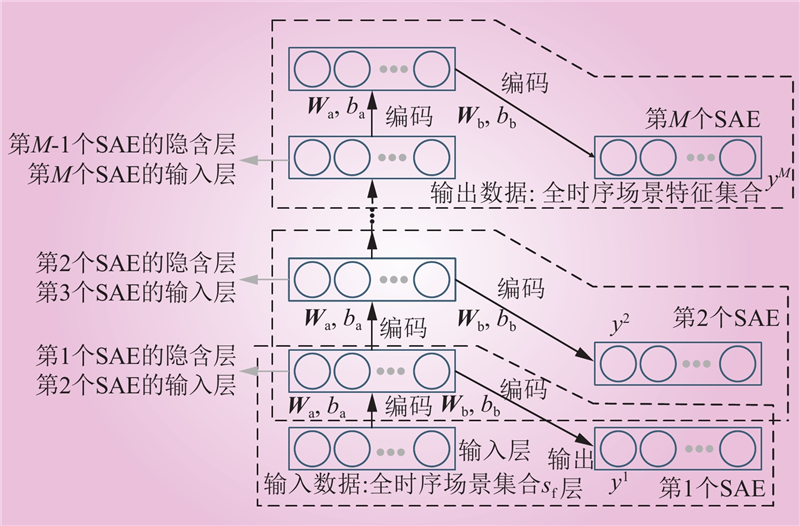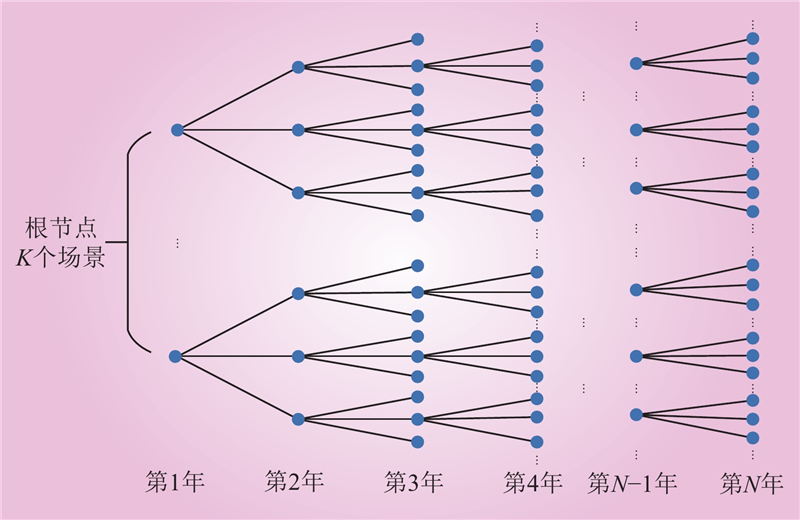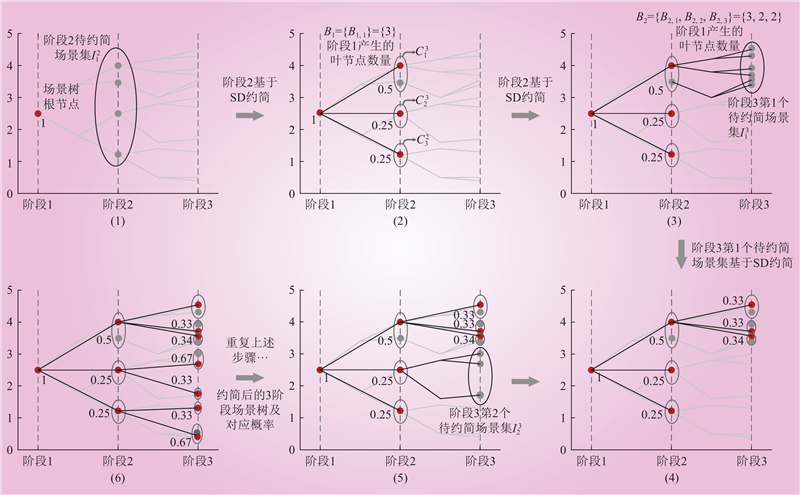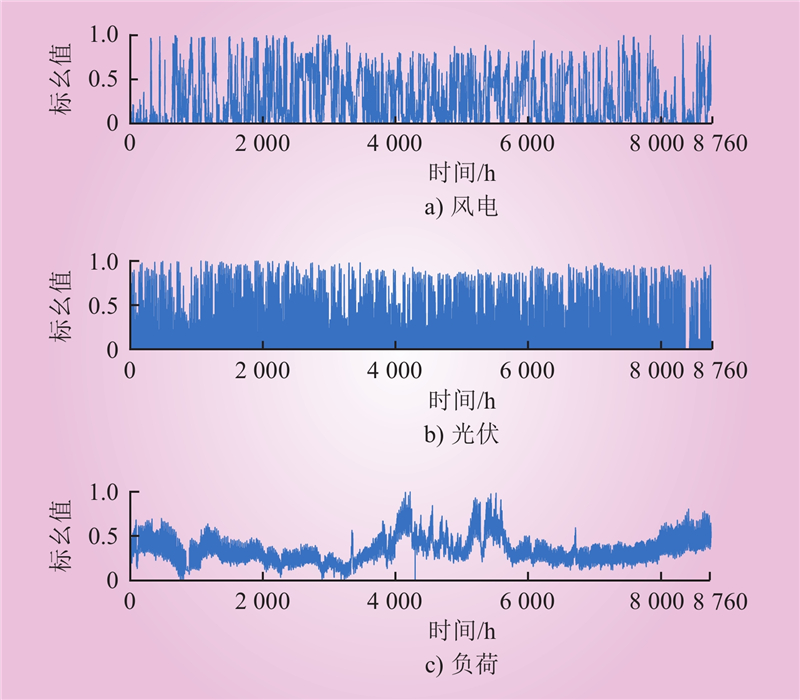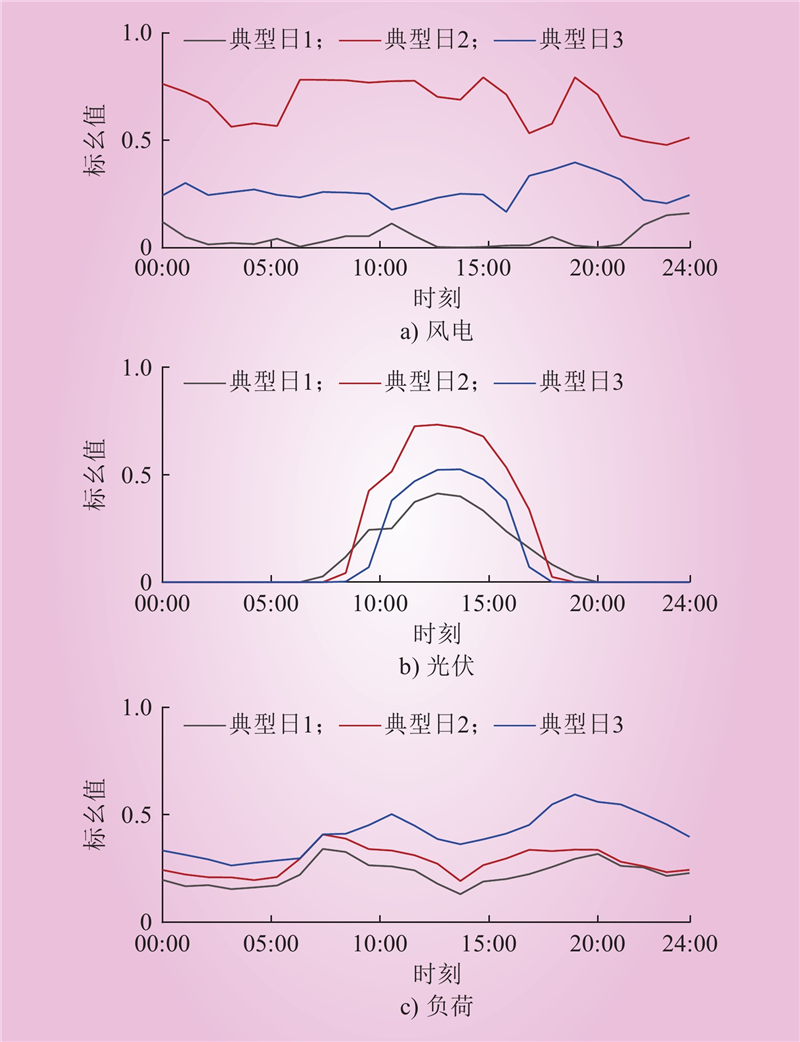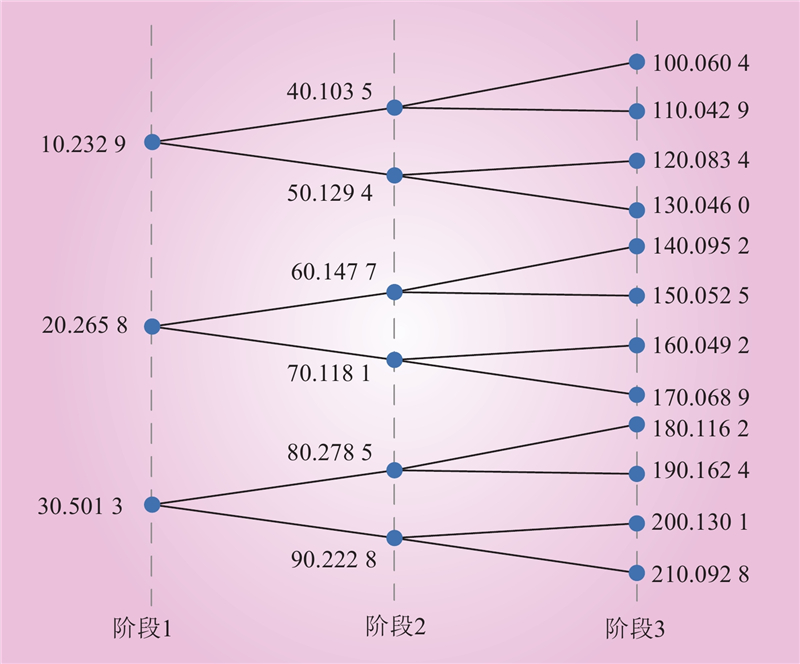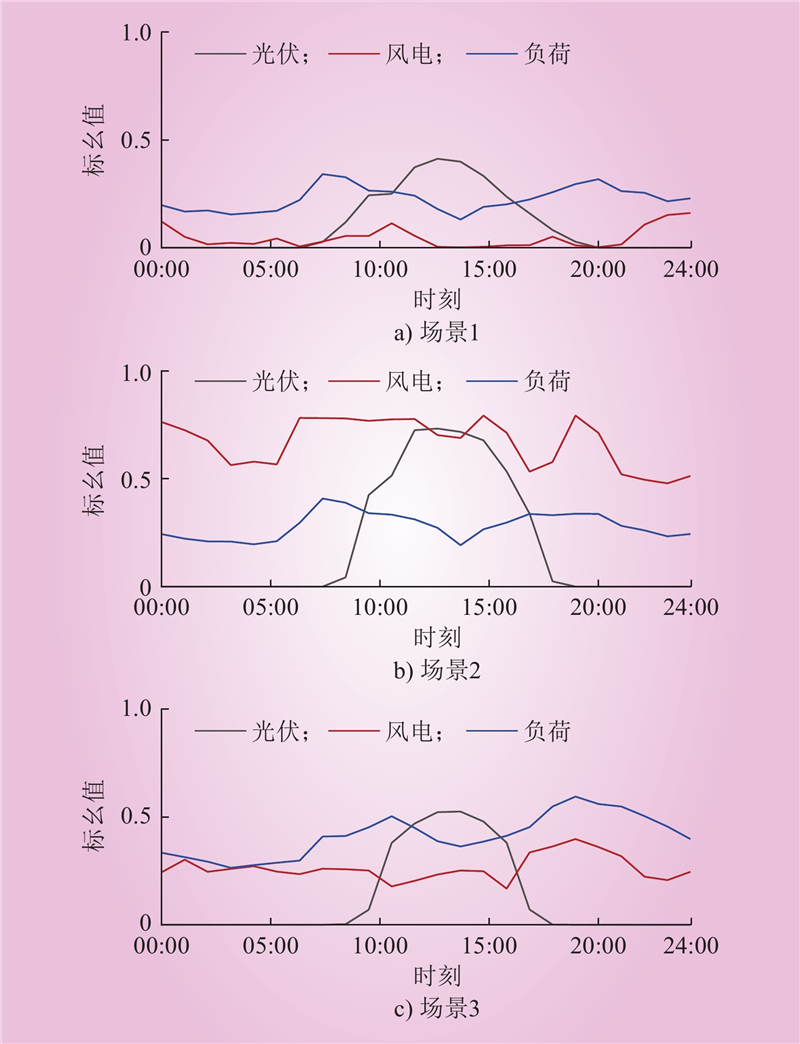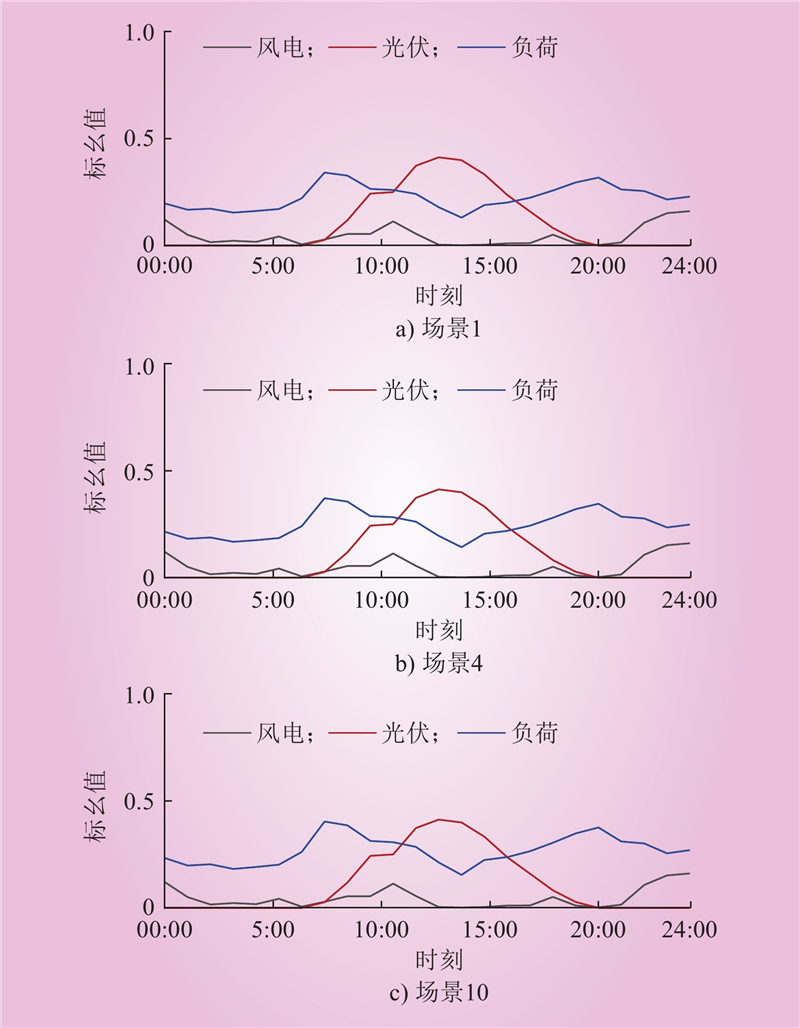| 1 |
李华, 程子月, 李旭东, 等. 考虑出力与电价不确定性的光伏集群有功功率分配方法[J]. 中国电力, 2023, 56 (10): 211- 218.
|
|
LI Hua, CHENG Ziyue, LI Xudong, et al. Active power allocation method for photovoltaic cluster considering output and electricity price uncertainty[J]. Electric Power, 2023, 56 (10): 211- 218.
|
| 2 |
陈国平, 董昱, 梁志峰. 能源转型中的中国特色新能源高质量发展分析与思考[J]. 中国电机工程学报, 2020, 40 (17): 5493- 5506.
|
|
CHEN Guoping, DONG Yu, LIANG Zhifeng. Analysis and reflection on high-quality development of new energy with Chinese characteristics in energy transition[J]. Proceedings of the CSEE, 2020, 40 (17): 5493- 5506.
|
| 3 |
袁铁江, 杨洋, 李瑞, 等. 考虑源荷不确定性的氢能微网容量优化配置[J]. 中国电力, 2023, 56 (7): 21- 32.
|
|
YUAN Tiejiang, YANG Yang, LI Rui, et al. Optimized configuration of hydrogen-energy microgrid capacity considering source charge uncertainties[J]. Electric Power, 2023, 56 (7): 21- 32.
|
| 4 |
汪宁渤, 马明, 强同波, 等. 高比例新能源电力系统的发展机遇、挑战及对策[J]. 中国电力, 2018, 51 (1): 29- 35, 50.
|
|
WANG Ningbo, MA Ming, QIANG Tongbo, et al. High-penetration new energy power system development: challenges, opportunities and countermeasures[J]. Electric Power, 2018, 51 (1): 29- 35, 50.
|
| 5 |
张辰毓, 许刚. 分布式多元随机动态场景生成及快速精准场景降维算法[J]. 电网技术, 2022, 46 (2): 671- 679.
|
|
ZHANG Chenyu, XU Gang. Distributed multivariate random dynamic scenario generation and fast & accurate scenario simplified algorithm[J]. Power System Technology, 2022, 46 (2): 671- 679.
|
| 6 |
DING T, HU Y, BIE Z H. Multi-stage stochastic programming with nonanticipativity constraints for expansion of combined power and natural gas systems[J]. IEEE Transactions on Power Systems, 2018, 33 (1): 317- 328.
DOI
|
| 7 |
赵雪楠, 段凯悦, 李萌, 等. 考虑调度决策非预期性的多阶段随机规划调度策略[J]. 电力建设, 2022, 43 (10): 87- 97.
DOI
|
|
ZHAO Xuenan, DUAN Kaiyue, LI Meng, et al. Scheduling strategy of multi-stage stochastic programming considering non-anticipativity of scheduling decision[J]. Electric Power Construction, 2022, 43 (10): 87- 97.
DOI
|
| 8 |
KAUT M, STEIN W. Evaluation of scenario-generation methods for stochastic programming[M]. Humboldt-Universität Zu Berlin, Mathematisch-Naturwissenschaftliche Fakultät II, Institut für Mathematik, 2003.
|
| 9 |
GÜLPıNAR N, RUSTEM B, SETTERGREN R. Simulation and optimization approaches to scenario tree generation[J]. Journal of Economic Dynamics and Control, 2004, 28 (7): 1291- 1315.
DOI
|
| 10 |
RUBASHEUSKI U, OPPEN J, WOODRUFF D L. Multi-stage scenario generation by the combined moment matching and scenario reduction method[J]. Operations Research Letters, 2014, 42 (5): 374- 377.
DOI
|
| 11 |
LATORRE J M, CERISOLA S, RAMOS A. Clustering algorithms for scenario tree generation: application to natural hydro inflows[J]. European Journal of Operational Research, 2007, 181 (3): 1339- 1353.
DOI
|
| 12 |
LEI Y, WANG D, JIA H J, et al. Multi-stage stochastic planning of regional integrated energy system based on scenario tree path optimization under long-term multiple uncertainties[J]. Applied Energy, 2021, 300, 117224.
DOI
|
| 13 |
张颖, 韩风. 考虑时间一致性的电力系统风险规避多阶段随机规划建模与求解[J]. 电力系统及其自动化学报, 2022, 34 (3): 28- 36.
|
|
ZHANG Ying, HAN Feng. Risk aversion multi-stage stochastic programming for the modeling and solving of power system considering time consistency[J]. Proceedings of the CSU-EPSA, 2022, 34 (3): 28- 36.
|
| 14 |
余轶, 陈峰, 曾杨, 等. 计及新能源发展目标的电力系统灵活资源多阶段优化配置[J]. 武汉大学学报(工学版), 2024, 57 (10): 1394- 1405.
|
|
YU Yi, CHEN Feng, ZENG Yang, et al. Multi-stage optimal planning of flexible resources in power system considering renewable energy developing target[J]. Engineering Journal of Wuhan University, 2024, 57 (10): 1394- 1405.
|
| 15 |
TANG L, SUN L L, GUO C H, et al. Adaptive spectral affinity propagation clustering[J]. Journal of Systems Engineering and Electronics, 2022, 33 (3): 647- 664.
DOI
|
| 16 |
金伟超, 张旭, 刘晟源, 等. 基于剪枝策略和密度峰值聚类的行业典型负荷曲线辨识[J]. 电力系统自动化, 2021, 45 (4): 20- 28.
DOI
|
|
JIN Weichao, ZHANG Xu, LIU Shengyuan, et al. Identification of typical industrial power load curves based on pruning strategy and density peak clustering[J]. Automation of Electric Power Systems, 2021, 45 (4): 20- 28.
DOI
|
| 17 |
徐来烽, 张沈习, 叶琳浩, 等. 考虑动态重构和智能软开关接入的配电网源网荷储联合规划[J]. 南方电网技术, 2024, 18 (4): 130- 140.
|
|
XU Laifeng, ZHANG Shenxi, YE Linhao, et al. Joint planning of source-network-load-storage in distribution network considering dynamic reconfiguration and intelligent soft open point[J]. Southern Power System Technology, 2024, 18 (4): 130- 140.
|
| 18 |
XIONG Y H, LU Y H. Deep feature extraction from the vocal vectors using sparse autoencoders for Parkinson’s classification[J]. IEEE Access, 2020, 8, 27821- 27830.
DOI
|
| 19 |
SHI C M, LUO B, HE S P, et al. Tool wear prediction via multidimensional stacked sparse autoencoders with feature fusion[J]. IEEE Transactions on Industrial Informatics, 2020, 16 (8): 5150- 5159.
DOI
|
| 20 |
丁涛, 李澄, 胡源, 等. 考虑非预期条件的电力系统多阶段随机规划建模理论与方法[J]. 电网技术, 2017, 41 (11): 3566- 3573.
|
|
DING Tao, LI Cheng, HU Yuan, et al. Multi-stage stochastic programming for power system planning considering nonanticipative constraints[J]. Power System Technology, 2017, 41 (11): 3566- 3573.
|
| 21 |
XU D B, CHEN Z P, YANG L. Scenario tree generation approaches using K-means and LP moment matching methods[J]. Journal of Computational and Applied Mathematics, 2012, 236 (17): 4561- 4579.
DOI
|
| 22 |
MEIRA L A A, COELHO G P, SANTOS A A S, et al. Selection of representative models for decision analysis under uncertainty[J]. Computers & Geosciences, 2016, 88, 67- 82.
|
| 23 |
WANG C, GAO R, WEI W, et al. Risk-based distributionally robust optimal gas-power flow with Wasserstein distance[J]. IEEE Transactions on Power Systems, 2019, 34 (3): 2190- 2204.
DOI
|
| 24 |
李晖, 刘栋, 梁涵卿, 等. 基于条件生成对抗网络随机场景的电力系统日前多阶段优化调度[J]. 新型电力系统, 2023, 1 (3): 272- 282.
|
|
LI Hui, LIU Dong, LIANG Hanqing, et al. Conditional-generative-adversarial-network-based day-ahead multi-stage stochastic scheduling of power systems[J]. New Type Power Systems, 2023, 1 (3): 272- 282.
|
| 25 |
聂晓音, 谢刚, 李洋, 等. 基于栈式相关性稀疏自编码的电力通信网故障诊断[J]. 电力系统保护与控制, 2019, 47 (19): 158- 163.
|
|
NIE Xiaoyin, XIE Gang, LI Yang, et al. Fault diagnosis of power communication network based on stacked relational sparse autoencoder[J]. Power System Protection and Control, 2019, 47 (19): 158- 163.
|
| 26 |
杨悦, 陈宇航, 成龙, 等. 考虑节点功率储备与中心性的主动配电网动态集群电压控制[J]. 电网技术, 2024, 48 (2): 618- 629.
|
|
YANG Yue, CHEN Yuhang, CHENG Long, et al. Power reserve and GIN centrality of buses considered dynamic cluster voltage control of active distribution networks[J]. Power System Technology, 2024, 48 (2): 618- 629.
|
| 27 |
PEYRÉ G, CUTURI M. Computational optimal transport: with applications to data science[J]. Foundations and Trends® in Machine Learning, 2019, 11 (5/6): 355- 607.
|
| 28 |
高崇, 周鹏, 罗强, 等. 考虑实际负荷增长模式下的配电网供电能力评估方法[J]. 南方电网技术, 2023, 17 (7): 115- 124.
|
|
GAO Chong, ZHOU Peng, LUO Qiang, et al. Evaluation method of load supply capability of distribution network considering actual load growth mode[J]. Southern Power System Technology, 2023, 17 (7): 115- 124.
|


